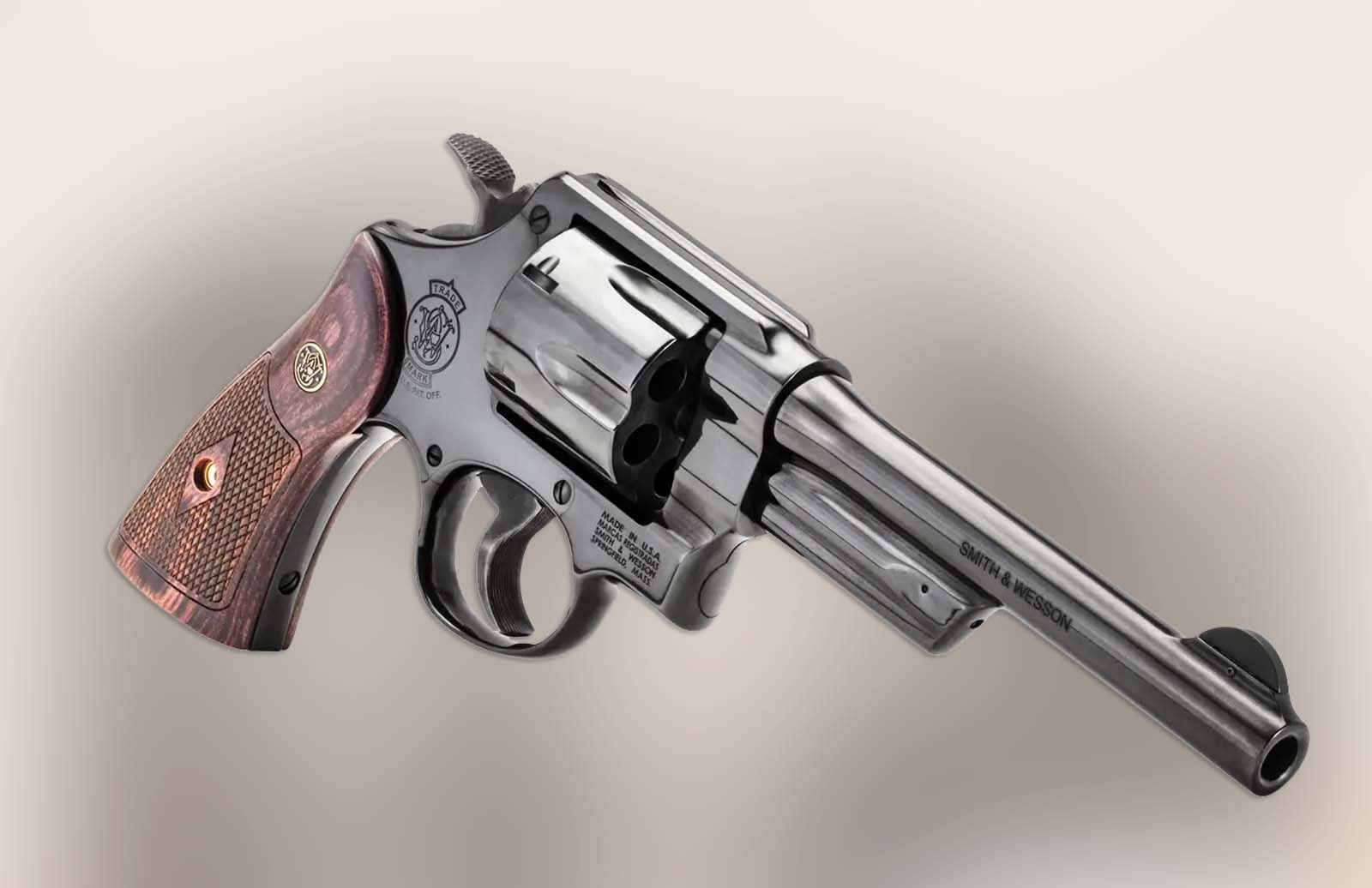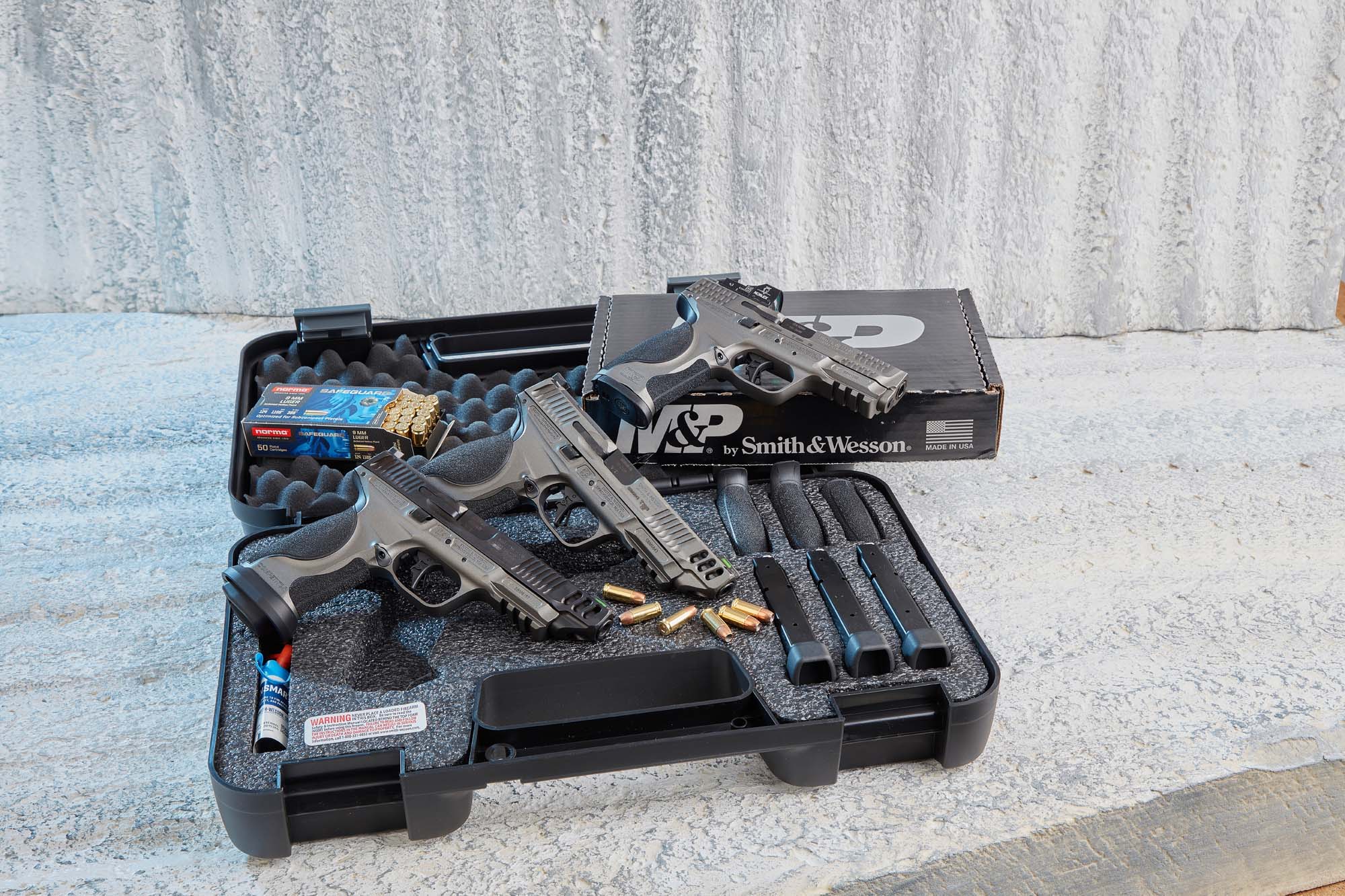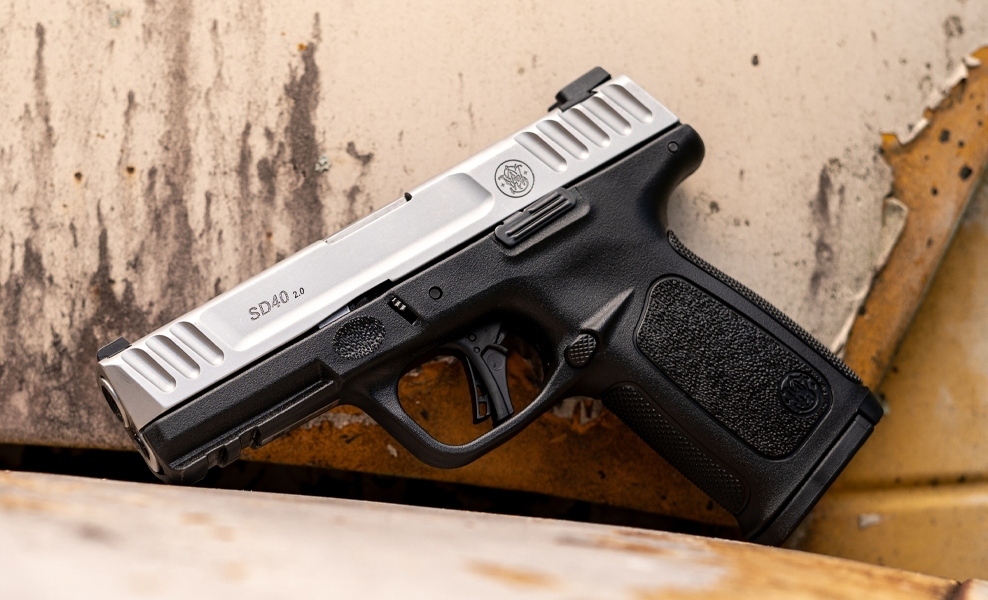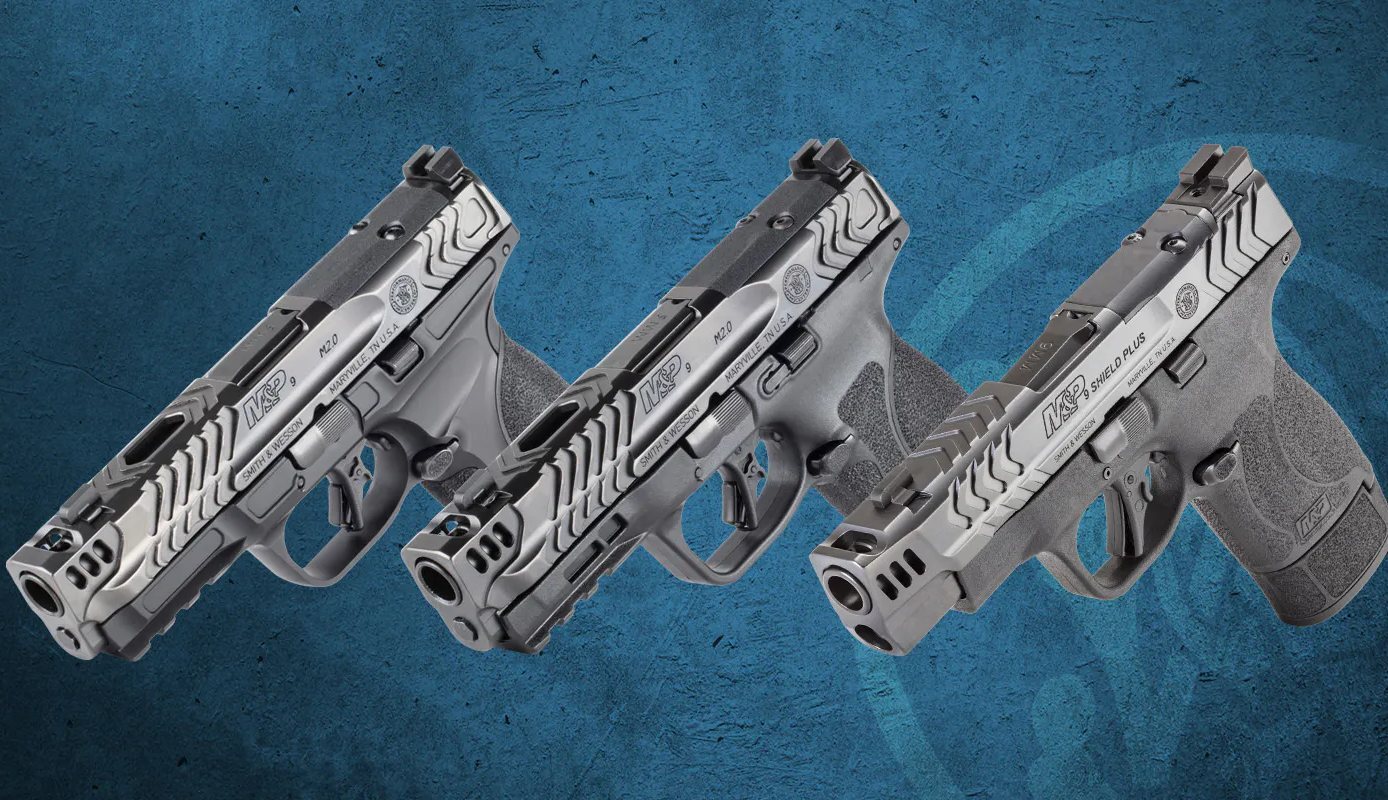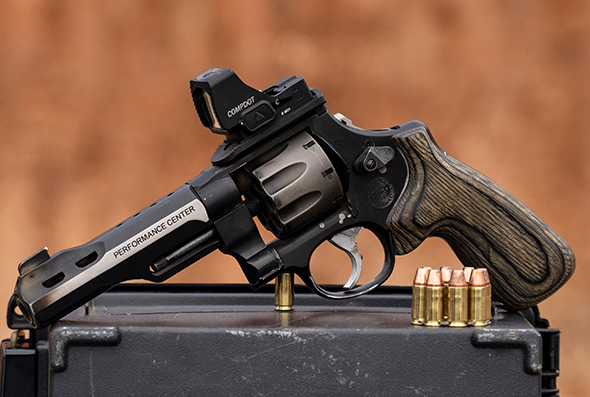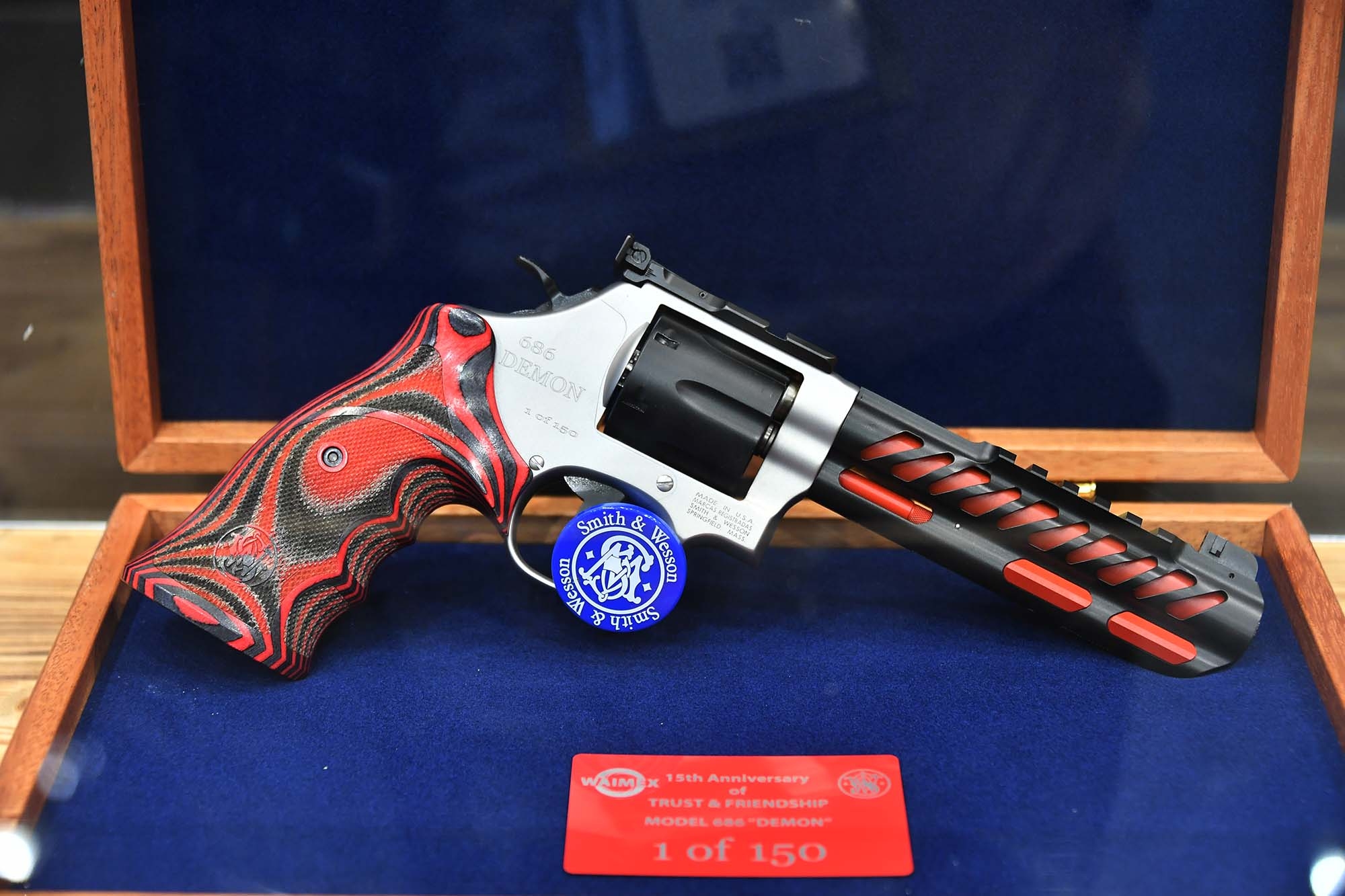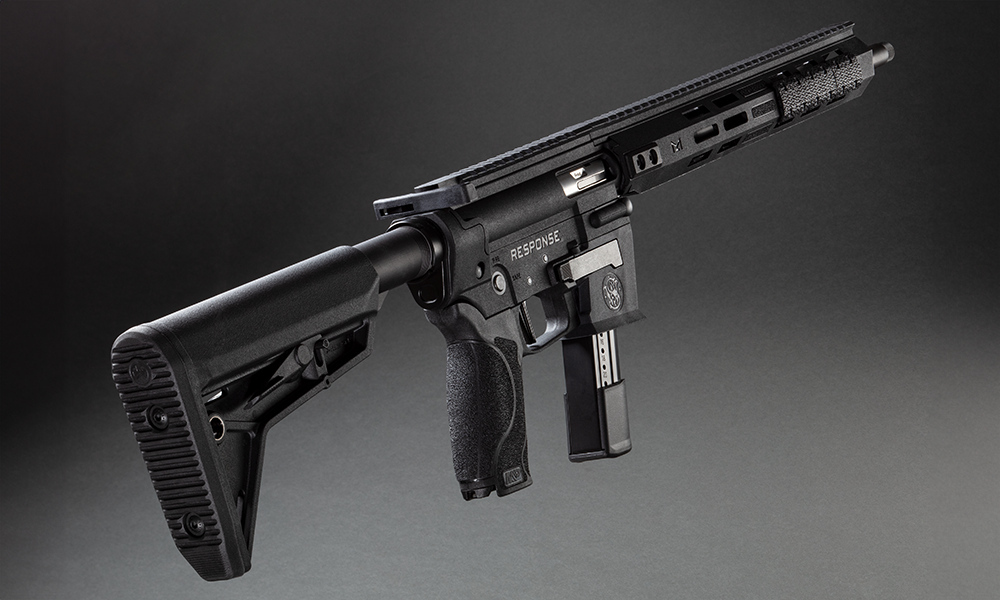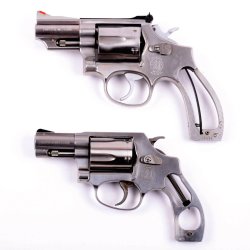
Historically, as many as eleven different S&W frames exist, but the Top Hinge, Top Break, and M- and I-frames have been phased out, while the C-frame did not make it past prototype status for only the Model 73. S&W revolvers with these frames can now only be found on the collector's and used guns markets. Currently, frames with the letters J, K, L, N, X and Z are still being manufactured. The further the letter in the alphabet, the larger the frame. But unfortunately, no rule is without exception. That's because the scandium alloy Z-frame of the Governor model in .45 Colt/.410 bore is much smaller than the mighty, steel X-frame of the 500 and 460 models chambered in the .500 S&W and .460 S&W super Magnum calibers. In addition, there are two grip styles for the popular frame sizes. If the grip frame is rounded and shorter, this is called a Round Butt (RB). The counterpart to this would be the square grip shape called Square Butt (SB), where in the side view the grip frame appears bell-shaped. We measured all six frame sizes currently available and show the differences in the table below. The original I-frame evolved first into an Improved I-frame with the release of the Model 34, and later into the J-frame of the typical S&W pocket revolvers that is still available today. A look at the table reveals that the top strap width of the J-frame is the smallest at 13.6 mm. Some were even made with a square grip, otherwise this revolver frame ran and still runs off the line with a "Round Butt" grip.
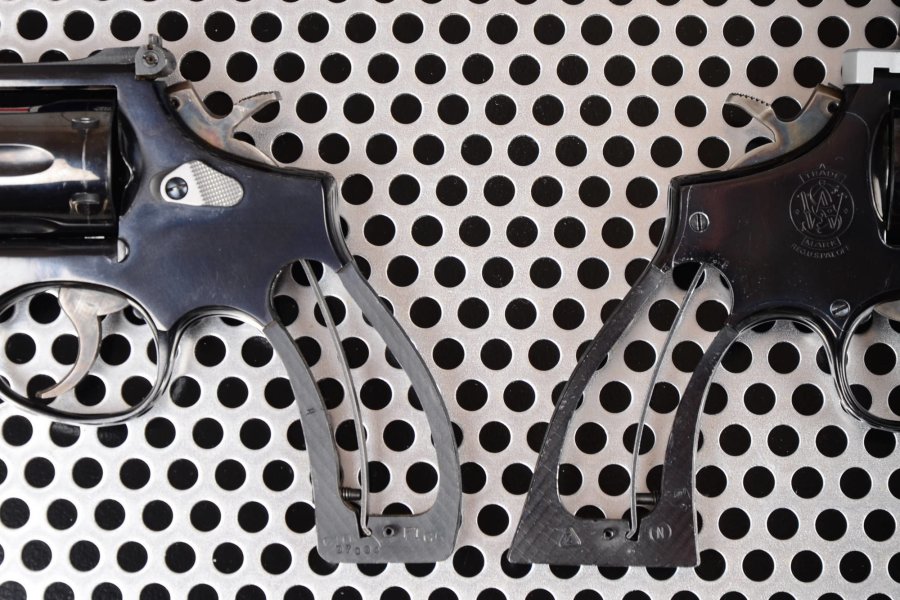
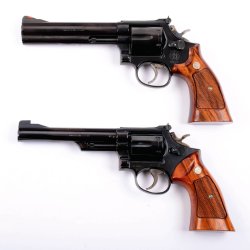
For example, if you want to use the oversized Nill wood grip in the Phil Hemphill design in PPC shooting sports, you must first determine if your existing revolver has the old or new J-fame. On the new model, the firing pin sits in the frame. In addition, the cylinder stop on the left side of the frame is a rib, while on the old model it is a round boss. The next size, the K-frame, is considerably larger than the small J-frame. Due to the larger capacity of now six instead of five cartridges, the diameter of the cylinder also grows. The area of the barrel root in the frame (cone) increases by 14% in length, and by as much as 17.5% in diameter. The L-frame of the M586/686 Distinguished Combat Magnum sporting revolvers, which are particularly popular with us, differs from the K-model only in the width of the cone (0.5 mm more material). It does appear more massive, but this is suggested primarily by the barrel with ejector housing ("underlug") extending to the muzzle. Otherwise, both frames are identical in the grip area, so that the grips/grip panels are equally suitable for K/L-frame revolvers. The only thing to note is the "Round Butt" or "Square Butt". The cylinder diameter on the L-frame increases by a whopping 2.7 mm compared to the K-frame. In conjunction with the heavy barrel, this particularly contributes to the weight increase.
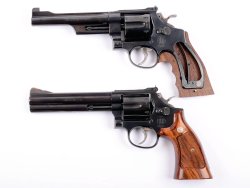
How was the L-frame developed? The first ever .357 Magnum revolver was the S&W M27 from 1935, but many police officers found it too heavy for everyday duty. It was followed in 1957 by the S&W M19/66 in .357 Mag. with a slimmer K-frame. However, the forcing cone often cracked at high firing rates, whereupon the S&W M686 with L-frame saw the light of day in 1986 as a middle solution between K- and N-frame revolvers. Since then, this has been the best-selling frame size of the iconic revolver maker from the US East Coast. While short-barreled models were equipped with a round grip frame, models with a barrel length of 4"/102 mm and longer received the square grip frame. Starting in 1995, a standardization in this regard took place, so that L-frame revolvers were only available with "round butt" frames. The cylinder diameter of the N-frame increases again compared to the L-frame – by a massive four millimeters. In the original .357 Magnum caliber, the wall thickness of the cylinder seems almost disproportionate, but the N-frame is also available in other calibers such as .44 Special (S&W M24 from 1950), .44 Magnum (S&W M29 from 1955) or .45 Colt (S&W M25 from the same year). In the case of the measured N-frame models M629 and M27, it was noticeable that the cylinder diameter was identical, but the cylinder length was caliber-specific.
While the cylinder for the .357 Magnum cartridges measured only 40.0 millimeters in length, the caliper showed a proud 44.2 mm for the .44 Magnum cylinder. Since 1995, S&W N-frame revolvers have only been available with "round butt" grips. The dimensions of the Z-frame of the exotic Governor revolver are listed in the table. On the largest X-frame released with the S&W M500 in 2003, the K/L/N frames look downright delicate compared to the 58.4mm long and 48.7mm measuring cylinder. To be able to fire the .500 S&W Mag caliber, the cone also had to be enlarged accordingly. The caliper shows 24.4 mm. That is 17% more than the K-frame. (To be continued)
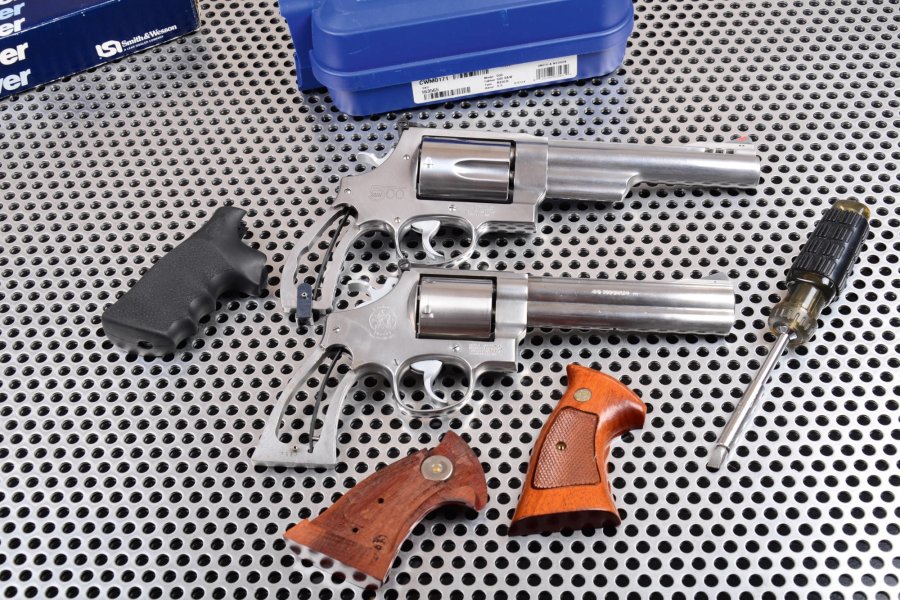
Frame comparison: a quick overview of all available frame sizes for Smith & Wesson revolvers
| Frame
Size: | J | K | L | N | X | Z |
| Grip
Frame Shape: | RB, SB | RB, SB | RB, SB | RB, SB | RB | RB |
| Cylinder
∅ (mm): | 33.1 | 36.8 | 39.5 | 43.5 | 48.7 | 43.5 |
| Cylinder
Length (mm): | 40.5 | 42.4 | 41.3 | 43.2 | 58.4 | 64.8 |
| Frame Top
Strap Width (mm): | 13.6 | 16.6 | 16.6 | 16.6 | 16.6 | 17 |
| Frame,
Window Height (mm): | 34 | 37.4 | 40.6 | 44.0 | 49.4 | 44.0 |
| Cone
Length (mm): | 13.7 | 15.6 | 15.5 | 19 | 21.5 | 19 |
| Cone
Width (mm): | 17.7 | 20.8 | 21.3 | 23.1 | 24.4 | 22.8 |
| Model
Numbers: | 36, 37, 60, 340, 940 | 12,13, 14, 15, 17, 18, 19, 53, 64, 65, 66, 67, 68, 617 | 581, 586, 619, 620, 646, 681, 686 | 25, 27, 28, 29, 58, 624, 625, 627, 629 | 460, 500 | Governor |
Text: Stefan Bader
In Part 2 we will take a look at S&W revolvers' sights, grips, cylinder releases and some other details.



